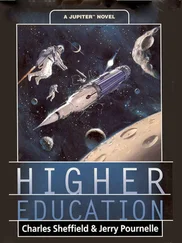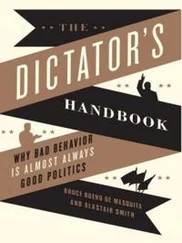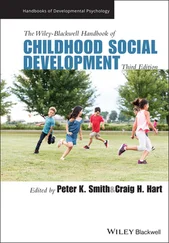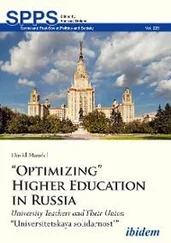This means that we have to learn how to turn our natural receptivity to virtues into full virtues. We grow into virtues through habituation, and virtues require practice, in a similar way to acquiring skills, e.g. we evolve as a generous person by performing generous actions, as we become pianists by playing the piano (NE 1103a). But acquiring both virtues and skills is not a passive process; both need effort, focus, and the right kind of practice (Russell 2015). Nevertheless, there is a difference between acquiring skills and acquiring virtues: unlike skills, virtues are essential for flourishing, and their scope and depth for human life are broader (Kristjánsson 2013). Thus, it is not only the amount of practice that matters, but rather the way the agent understands and carries on that practice. Aristotle is adamant: “It makes a huge [difference], or rather, all the difference” (NE 1103b). So eudaimonia as collective human flourishing or true happiness for the common good would be the lodestar guiding the acquisition of virtue, and arguably also guiding ES projects. In this sense, Kristjansson (2016) concludes from his review on flourishing as an overarching aim of education (p. 18):
The uniqueness of a flourishing paradigm on human well‐being lies in its insistence that education and teaching is woven into the very fabric of flourishing – as work in progress until our dying day – and that any effort deserving of the name “education” must be characterised as education for flourishing.
It follows from the above reasons that the practice of cultivating virtues requires guidance. This guidance goes well beyond mechanically imitating the acts performed by virtuous exemplars, but focusing on the qualities that make a person virtuous, allowing students to choose their particular perspective aimed at developing the right criteria to become so (Athanassoulis 2018). That perspective can only be understood from within (Sherman 1989, p. 418). Again, phronesis lies at the heart of the qualities that make a person virtuous, manifested in the ability “to see” what is required in each situation to arrive at a virtuous decision (Waddock 2010; Russell 2015).
4.4 Virtue Education in Practice: Exploring Pathways to Develop Phronesis for Sustainability
The arguments presented so far support the focus on cultivating practical wisdom in the goal to ground the moral and political dimensions of ES from virtue ethics. Phronesis , as mentioned, is not just another virtue, but the necessary one for moral virtues to be exercised. Reciprocally, one cannot execute practical wisdom without having all the moral virtues – they are interrelated in a kind of unity (Russell 2009) – since phronesis involves identifying the right virtues to the right ends of action: “It is evident that it is impossible to be wise in practice without being good,” Aristotle states (NE 1144a).
Phronesis , therefore, provides the good judgment to resolve problems of specificity, relevance, and conflict by perceiving the moral aspect of a situation and by deliberating on how to act in the interest of the right end (Schwartz and Sharpe 2006; Russell 2015). Thus, the challenge of enabling people to address the complexity of socioecological problems would benefit from establishing phronesis as an explicit learning goal of ES. Cultivating practical wisdom helps us to act from virtue in the multiple situations in which socioecological global challenges unfold (e.g. when a policy‐maker participates in discussions about new regulations affecting the climate; when a consumer makes a decision about whether to buy an attractive product or refrain from buying it; when an entrepreneur is faced with a conflict between social and economic benefit).
However, since practical wisdom comes from experience in real situations, theoretical knowledge is not sufficient to teach phronesis (Ames and Serafim 2019). This might seemingly make it difficult to include practical wisdom as a learning objective in formal education (Schwartz and Sharpe 2006); nevertheless, to the extent that experiential approaches are common in most educational projects, including a phronesis perspective in learning objectives would be worthwhile and feasible to implement.
In the following, we suggest pedagogical approaches that might serve as illustrations on how to bring phronesis into the classroom in the context of ES. 2 For that purpose, we draw upon the four‐component model of phronesis by Kristjánsson et al. (2021), that aims to contribute to the operationalization of practical wisdom and to fill the gap between moral knowledge and action: (i) the ability to perceive the moral components and implications of a situation ( constitutive function ); (ii) the ability to judge and to prioritize virtues in conflicting or dilemmatic situations ( integrative function) ; (iii) the ability to reflect on and understand what means flourishing ( blueprint function ); and (iv) the ability to adjust and foster the emotions that would be conducive to that flourishing life ( emotional regulative function ). For the sake of greater clarity, we present specific pedagogies associated with each one of the four components; however, they are by no means exclusive to this component, as is evident throughout the text.
Also, it is important to note that, alongside this multifaceted quality of phronesis , its processual nature is also part of the emphasis of virtues on how (and why) the agent arrives at the right action, rather than the emphasis on the rightness of the action itself. In this sense, the phronetic process involves different stages, as explained by MacIntyre (1999):
A chain of reasoning whose first premises concern the human good, whose intermediate steps specify what the virtues require, if human good is to be achieved, and whose conclusion is the action that it is good and best to perform here and now. (pp. 158–159)
Recognizing this spiral movement of awareness, deliberation, and choice through which phronesis develops according to the particularities of a situation can help guide its formation. As such, it is integrated into our proposals.
4.4.1 Perceiving (Constitutive Function)
The first stage in the chain of reasoning of phronesis entails the discriminatory capacity to recognize the moral issues of a given situation and which virtues are required (Kristjánsson et al. 2021). As Russell (2009) highlights, it is about the ability to “sense” and to “read” a situation so as to reflect on what to do.
Moral imagination stands out as a relevant ingredient in this stage in order to train practical wisdom, as it provides awareness and understanding of the consequences of different actions that may derive from a situation (Waddock 2010). In a well‐cited work, Werhane (2002) defines moral imagination as “the ability in particular circumstances to discover and evaluate possibilities not merely determined by that circumstance, or limited by its operative mental models, or merely framed by a set of rules or rule‐governed concerns” (p. 93). Moreover, Sanderse (2012) conceives moral imagination as a virtue itself, needed to deal with suffering and with the vulnerability of human life since it awakens our sense of commonness with others.
Thus, cultivating moral imagination to develop the phronetic capacity to “sense” and “read” the moral dimensions of challenges involves perceiving in a transformative way, as we argued in Section 4.2. In this sense, educators might focus on the awareness of dominant mental models as well as on the envisioning of new ones better aligned with the challenges posed by socioecological crises.
Читать дальше












